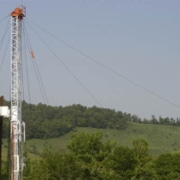Obviously, there’s a lot more than just three, but let me hit on the triad of pillars. Let’s learn more about the U.S Oil and Natural gas Industry here.
Producing at All-Time Record
Over this time, U.S. crude oil production has surged 140% to 12.2 million b/d, while gas output is up 55% to 88 Bcf/d.
The U.S. is now easily the world’s largest oil and gas producer, yielding 20% more oil and 25% more gas than Russia.
Will Still Supply the Bulk of Our Energy
Today, oil and gas are our two most important sources of energy, meeting 65% of total U.S. energy demand.
We lean on oil for 97% of our transportation needs, and increasingly, natural gas leads by generating 35% of all U.S. electricity.
This will be a cornerstone of meeting our climate change and environmental goals: “Thanks to Natural Gas, US CO2 Emissions Lowest Since 1985.”
Going Global
Not just being the largest oil and gas producer, The U.S. could also become the largest global seller of these essential fuels within five years.
Our total LNG export capacity stands to reach nearly 8 Bcf/d, or nearly 20% of the total global demand market.
Read the full article here
Source: Forbes.com
If you have further questions about the Oil and Natural Gas Industry , feel free to reach out to us here.








